Other Guides
In this article
Python vs JavaScript: The Ultimate Guide for 2025
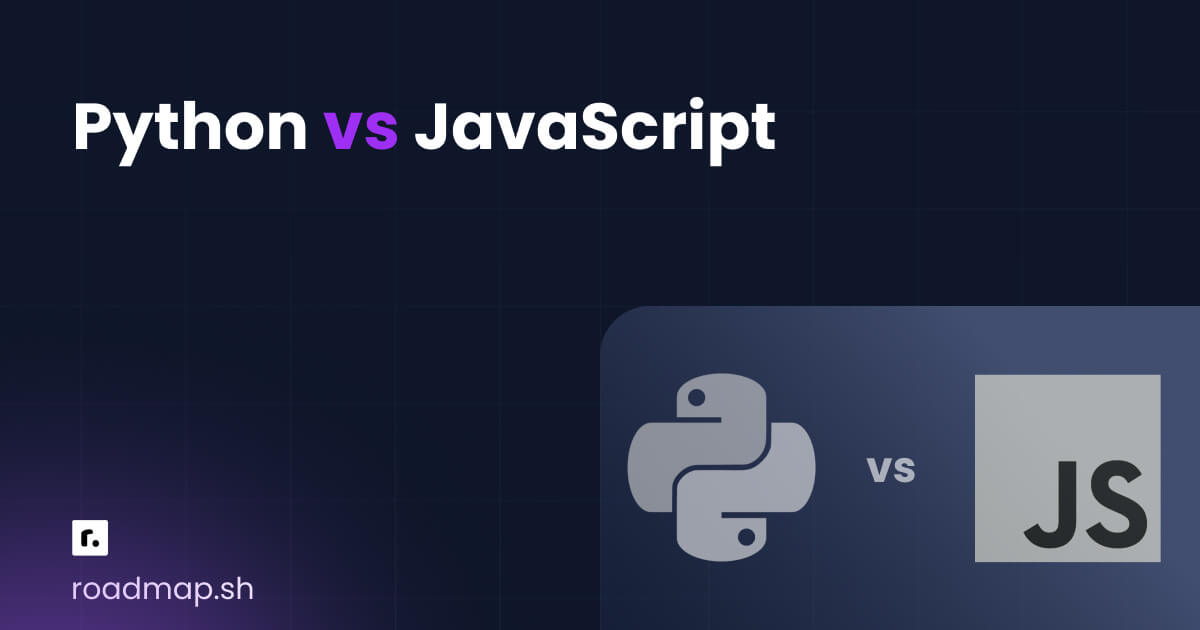
If you’re starting in the world of programming, you’ve undoubtedly run into the two giants of the industry: Python and JavaScript.
They are consistently ranked among the most popular programming languages, and for good reason. Both are powerful, versatile, and backed by massive communities (sometimes it feels like every developer and their mothers are using one of them).
But while they share some similarities, they are designed to solve very different problems.
The Python vs JavaScript debate isn't about which language is objectively better (we’ll never be able to answer that question), but which one is the right tool for your goals.
Are you passionate about building beautiful, interactive web pages? Or does the world of data science and artificial intelligence excite you?
This guide will walk you through the key differences between these two languages, helping you make an informed decision on where to start.
Quick Recommendations (TL;DR)
Then again, why bother reading the whole article? Just jump right ahead into the summary and find the answer you were looking for.
Keep reading if you’re still on the fence after going through this section.
Choose JavaScript if your primary goal is building for the web.
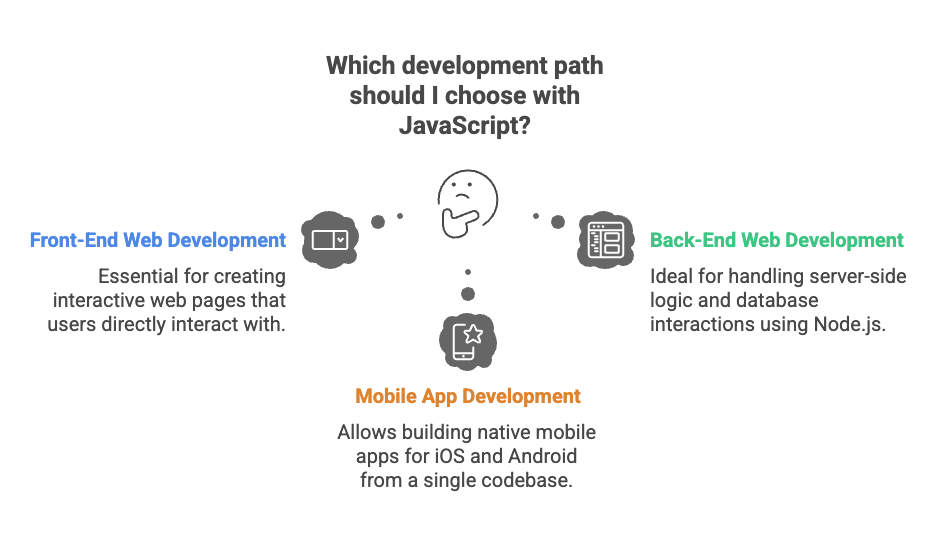
JavaScript is the language of the browser. If your primary interest is in building applications that users see and interact with, this is your starting point.
If you’re willing to start a career as a JavaScript developer, we recommend that you have a look at our JavaScript roadmap, which takes you through from the most basic syntax to advanced JavaScript topics.
Front-End Web Development
What it is: Building the visual and interactive parts of a website that a user sees and clicks on—everything from buttons and forms to complex animations. This involves working directly with HTML and CSS.
Why it's the right choice: It’s not just a choice; it’s a requirement. Every modern web browser understands JavaScript code natively. It's the only language that allows you to directly manipulate web pages and create the rich, interactive web pages that users expect.
Back-End Web Development
What it is: Writing the code that runs on the server to handle things like user logins, database interactions, and the core logic of a web application.
Why it's a strong choice: With Node.js, you can use the same language for both the front-end and the back-end. This is a huge advantage for JavaScript developers, as it allows for a unified codebase and simplifies the entire web development process.
Mobile App Development
What it is: Creating applications for iOS and Android phones.
Why it's a popular choice: Frameworks like React Native and NativeScript allow you to write JavaScript code that can be compiled into a native mobile app for both platforms. This means you can build for both iOS and Android from a single codebase, saving significant time and resources.
Choose Python if you are interested in data, AI, scientific computing, or versatile backend development.
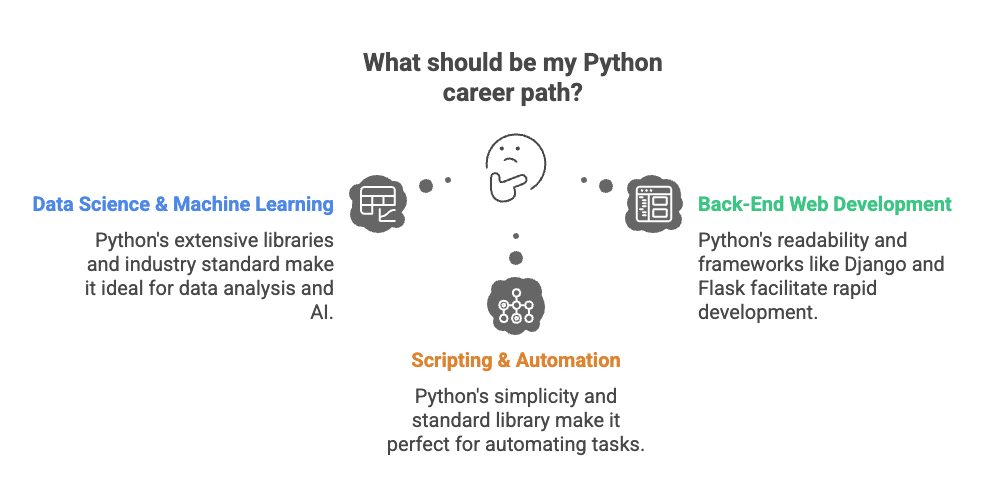
Python is the dominant language for anything related to data, from analysis to artificial intelligence. Its clean syntax also makes it a powerful and beloved tool for building the brains behind an application and a great option if you’re new to software development (thanks to its similarity to a written language such as English).
Willing to become a Python wizard? Check out our dedicated Python roadmap and get ready for one of today’s most popular programming languages.
Data Science & Machine Learning
What it is: Analyzing huge sets of data to find patterns, make predictions, and power artificial intelligence systems.
Why it's the right choice: Python's ecosystem of libraries is unmatched. Tools like Pandas, NumPy, and Scikit-learn make complex data analysis and machine learning tasks incredibly straightforward. If your goal involves working with large datasets or building predictive models, learning Python is the industry standard.
General Back-End Web Development
What it is: Building the core logic on the server for a web application, especially for sites that are data-intensive or require complex logic.
Why it's a great choice: Python's emphasis on code readability and simplicity makes it fantastic for building and maintaining complex back-ends. Mature frameworks like Django and Flask allow for rapid development, making Python a go-to choice for everything from startups to large companies like Instagram and Spotify.
Scripting & Automation
What it is: Writing small programs (Python programs) to automate repetitive tasks, such as renaming thousands of files, scraping data from websites, or managing system processes.
Why it's the right choice: Python is often called the ultimate "glue language." Its simple syntax and powerful standard library make it the perfect scripting language for quickly writing tools to automate your workflow.
Python vs JavaScript: Comparison Table
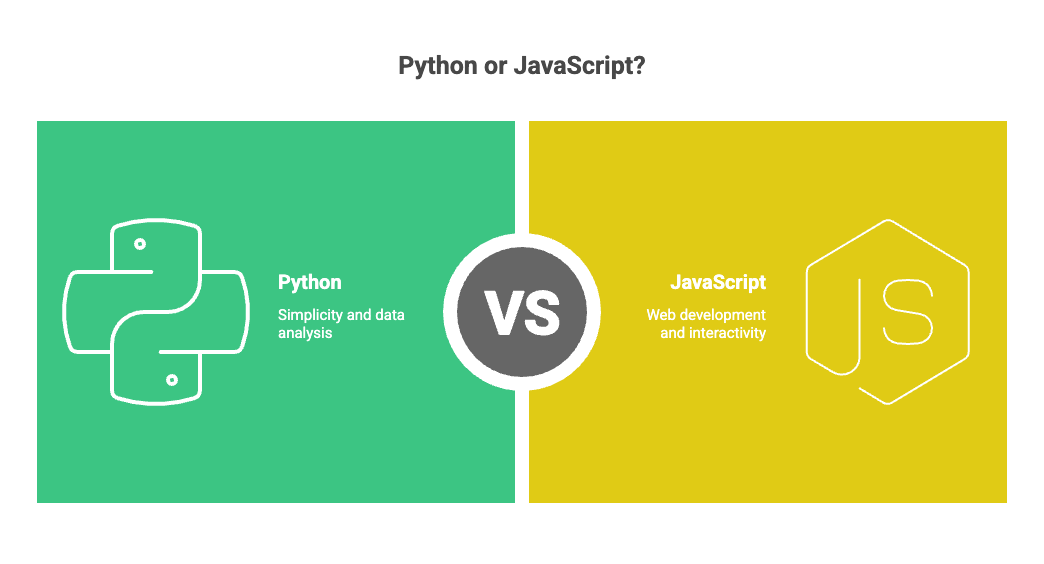
Here’s a quick side-by-side look at how both Python and JavaScript stack up.
Feature | Python | JavaScript |
|---|---|---|
Primary Domain | Data Science, AI, Backend Web Development. | Web Development (both Front-End and Back-End). |
Paradigm | Object-oriented, procedural, and functional programming. | Supports multiple programming paradigms, including event-driven, functional, and object-oriented. |
Typing | Dynamically typed language. | Dynamically typed language. |
Core Strength | Incredible libraries for data, science, and machine learning. | The undisputed language of the web browser for creating interactive web pages. |
Learning Curve | Generally considered easier to learn due to its simple, clean syntax. | Steeper initial curve due to its environment (the browser, HTML, CSS) and asynchronous nature. |
Use Cases | Data analysis, AI models, image processing, scientific applications, and back-end programming. | Building UIs, single-page applications, server-side applications with Node.js, and mobile app development. |
When to Choose Based on Career Path
Your career goals are a major factor in choosing a language. Both fields are in high demand.
The JavaScript Career Path: The Web Artisan
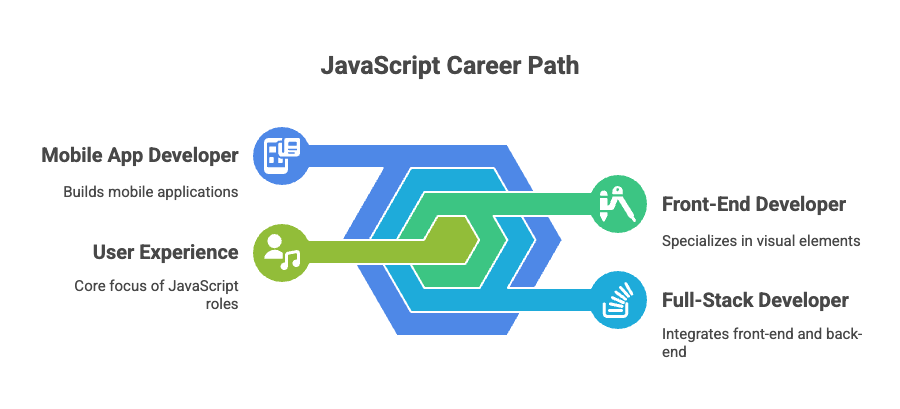
The type of role you’ll be doing if you decide to go for a JavaScript-heavy career path is: Front-End Developer, Full-Stack Developer, or Mobile App Developer.
This path is mostly about user experience, with some potential backend development sprinkled around (if you decide to go for a full-stack option).
You'll work closely with designers to bring web pages to life, creating the visual and interactive elements that users touch and see.
The ecosystem is fast-paced and always evolving, so you'll constantly be learning new tools and frameworks. If you love building things people can see and interact with immediately, this is for you.
The Python Career Path: The Data Pioneer
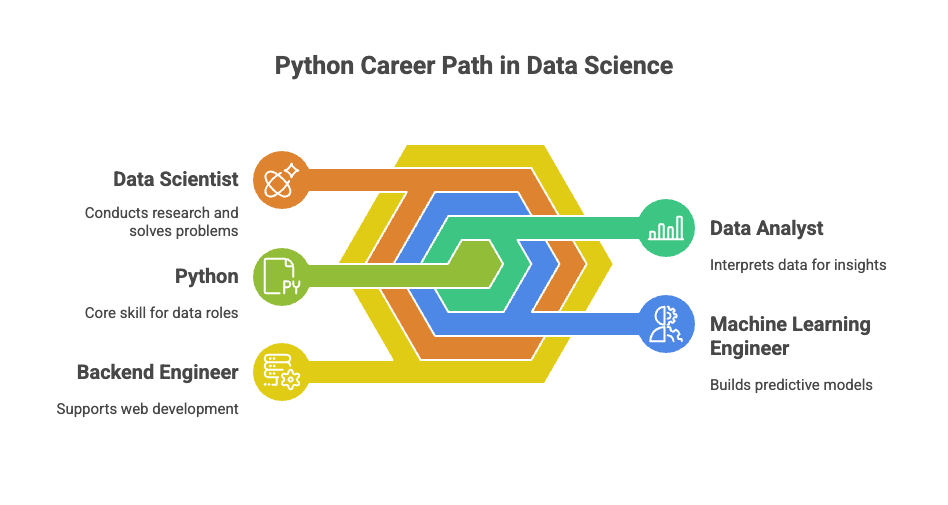
For this career path, the roles are very different. While you could be involved in some web development projects (thanks to Python’s great backend support), most of the best-paid Python roles are Data Scientist, Machine Learning Engineer, Data Analyst, and Backend Engineer.
This path is analytical, investigative, and often research-oriented.
You’ll be solving problems with data (building predictive models, uncovering insights from massive datasets, and automating complex processes).
You might be working on anything from a computer vision project to a financial forecasting model. If you love logic, statistics, and finding patterns, learning Python is a fantastic choice.
When to Choose Based on Project Type
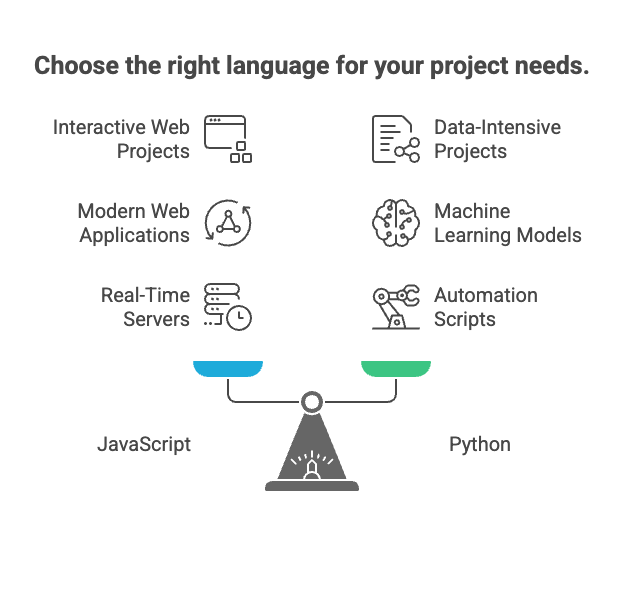
Let’s now focus on practicality instead. What do you actually want to build? Let’s pick the language based on that answer.
Build with JavaScript when your project looks like this...
An Interactive Website
If you want to go beyond static HTML and CSS to handle user input, validate forms, and create dynamic effects, you need JavaScript. Even if you’re building a contact form with some great UX, JavaScript is usually going to be a great ally there.
A Modern Web Application
If, instead of building a fancy website, you’re going all in for a complex, single-page application (like Google Maps or Facebook), where the content updates without reloading the page, then JavaScript (with frameworks like React or Vue) is essential.
You’ll be doing a lot of coding in JavaScript here and re-using the very few lines of HTML and CSS that you might end up writing. This is the beauty of the language; its access to the DOM API allows you to build fantastically dynamic interfaces with ease.
There are tons of libraries and frameworks out there built specifically for this purpose, so try to avoid going into these projects with vanilla JavaScript; they’ll make your life a lot easier.
A Real-Time Server
If you're building something like a chat application or a live dashboard, you can opt for using JavaScript, both on the front-end and the back-end.
And when that happens, you’ll see that Node.js on the server is an excellent choice for handling many simultaneous connections. You can easily integrate both the back-end and the front-end through sockets using the same library everywhere.
Build with Python when your project looks like this...
A Machine Learning Model
If you need to analyze a dataset to make predictions (for example, a Python program for classifying images or predicting customer churn), Python's libraries (Scikit-learn, TensorFlow) are unrivaled.
They’ve been around for years, and the community has helped evolve them to the levels they’re at now.
This clearly unrivaled position started because Python's simple, English-like syntax was perfect for scientists, mathematicians, and researchers who weren't primarily software engineers.
They could focus on their complex algorithms and data analysis without fighting a complicated programming language. This early adoption created a snowball effect, leading to an ecosystem of libraries for artificial intelligence that is number one in the industry.
An Automation Script
Need to scrape a website, organize thousands of files, or automate data entry? Python code is perfectly suited for these kinds of scripting tasks.
This is why it’s such a de facto choice for automation engineers, DevOps, and developers looking to automate their daily tasks to improve their workflow performance.
A Data-Intensive Backend
If what you’re building is data-intensive, between these two programming languages, Python is the one that takes the lead.
If you're building the back-end for a web application that needs to perform complex calculations, connect to multiple data sources, or serve up data analysis results, Python (with frameworks like Django or Flask) is a rock-solid choice.
Even for big-data pipelines, you can use Python with PySpark to distribute the load of the processing jobs and process an immense amount of data efficiently.
In-Depth: Python Pros & Cons
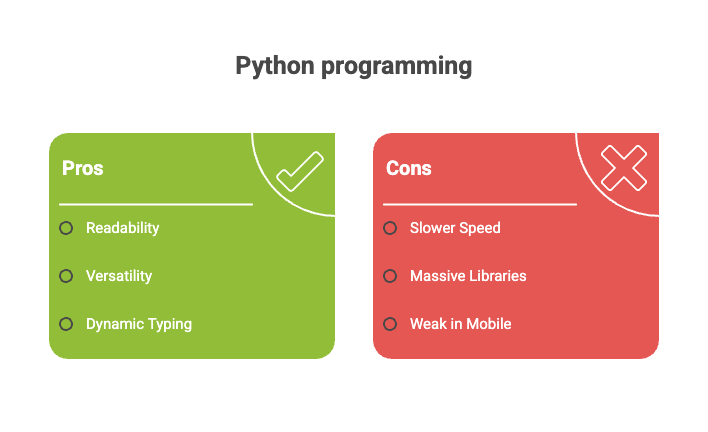
Let’s take a closer look at Python and understand that not everything that shines is gold, as they say.
There is a downside to our friendly snake pet, so let’s dive in:
Pros | Cons |
|---|---|
Incredible Readability: Python makes its code look clean and simple, almost like plain English, which is why it's a favorite in computer science education. | Slower Speed: As an interpreted language, Python is slower than compiled languages. |
Massive Libraries: The ecosystem for data science, AI, and scientific computing is unmatched by other languages. | Weak in Mobile: It's not a native choice for mobile app development. |
Versatility: It's a fantastic high-level programming language for everything from scripting to back-end web development. | Dynamic Typing: While easy for beginners, dynamic typing can sometimes lead to unexpected errors at runtime related to a variable's data type. |
In-Depth: JavaScript Pros & Cons
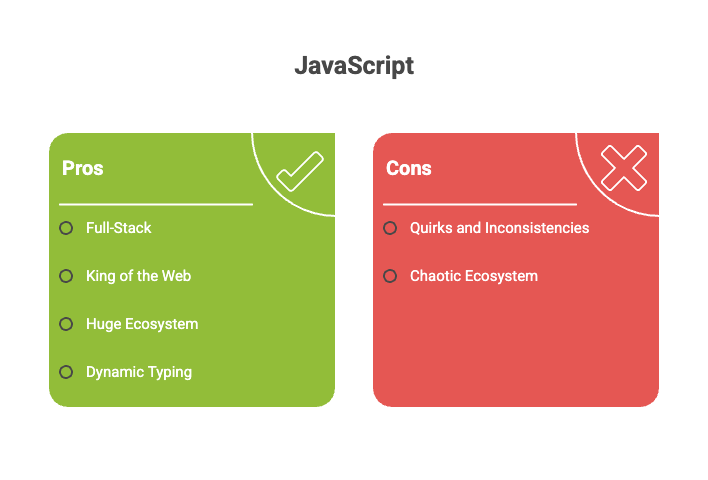
And of course, let’s do the same for JavaScript, let’s take a close look at what makes this language great and not-so-great.
Pros | Cons |
|---|---|
King of the Web: It's the only language that runs in every web browser, making it essential for front-end web development. | Chaotic Ecosystem: The world of JavaScript moves incredibly fast, and the sheer number of tools and frameworks can be overwhelming. |
Full-Stack: With Node.js, JavaScript developers can handle both the client and server sides of a web application. | Quirks and Inconsistencies: The language has evolved rapidly, leading to some unusual behaviors that can trip up newcomers. |
Huge Ecosystem: npm (Node Package Manager) is the largest software registry in the world. | Dynamic Typing: Like Python, the lack of strict type checking can make it harder to catch errors before the code runs. |
Final Recommendations & Decision Flowchart
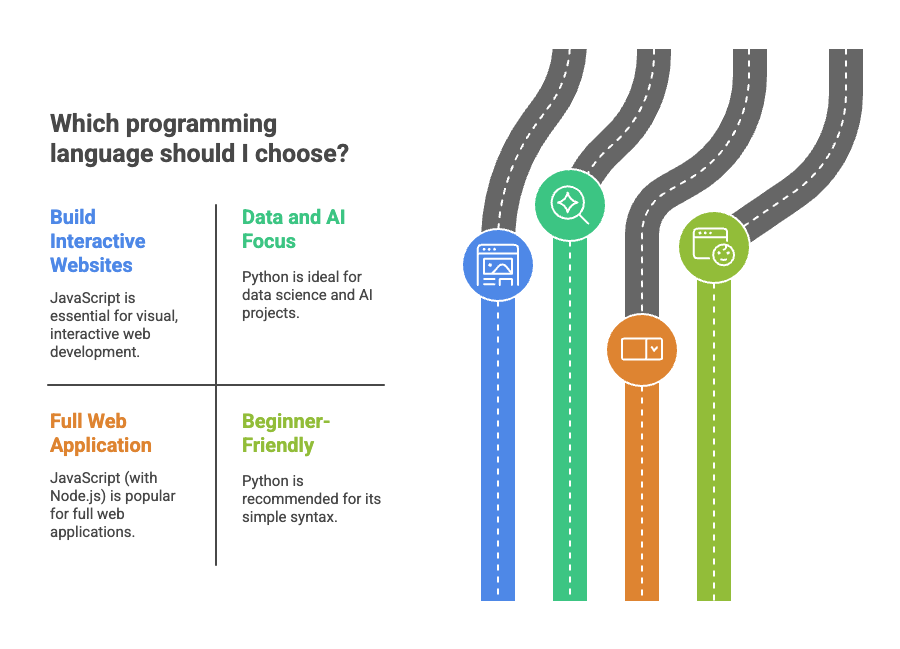
If none of the above explanations and tables have managed to give you the answer you’ve been looking for, let’s take a more logical approach: Answer these questions to find your path.
Is your main passion building visual, interactive websites?
YES -> Start with JavaScript. It's not a choice; it's a requirement.
NO -> Go to step 2.
Are you fascinated by data, AI, and making discoveries from numbers?
YES -> Dive into Python. You'll feel right at home.
NO -> Go to step 3.
Do you want to build a full web application with just one language?
YES -> JavaScript (with Node.js) is a very popular path for this.
NO -> Go to step 4.
Are you a complete beginner looking for the gentlest introduction to programming concepts?
YES -> Learning Python is often recommended for its straightforward and readable syntax.
NO -> Either language is a great choice! Pick the one whose projects excite you more.
Final Conclusion
The choice between Python vs JavaScript is less a rivalry and more a question of focus. Both Python and JavaScript are incredible, powerful tools that support multiple programming paradigms, and they even share an industry (web development).
JavaScript is the language of the browser, the de facto choice for painting interactive experiences on the canvas of the web. If you want to build what people see and click on, you must learn JavaScript. There is no other option.
Python is the language of the server and the scientist, the researcher's best bet for unlocking the secrets hidden in data (Jupyter notebooks, anyone?). If you want to power the logic behind applications or dive into the world of machine learning, Python is your trusted companion.
In the end, the best language to learn first is the one that will give you the results you’re looking for and keep you motivated.
No matter the language of your choice, Roadmap.sh is here to help you. Check out our dedicated JavaScript and Python roadmaps to get a glimpse of what’s ahead in your learning journey.
 Fernando Doglio
Fernando Doglio